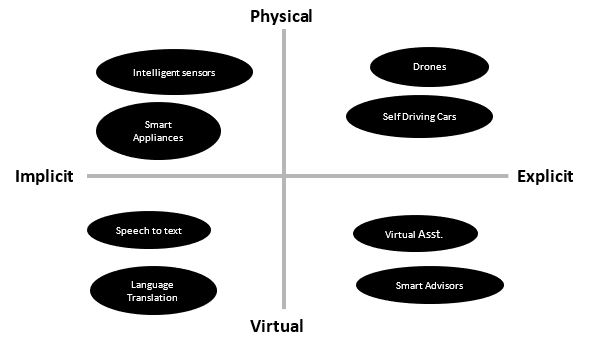
By 2022, millennials and Generation Z will comprise 75 percent of the global workforce. For employers, the influx of younger workers means adapting to different expectations. Millennials, for example, expect to collaborate across geographies and time zones to get things done—and they expect to spend a considerable amount of their day using collaboration software. But enabling the type of collaboration that millennials expect is more challenging than buying a few video conferencing solutions or getting a subscription of the new hip messaging platform.
So how do employers re-imagine their tech stack today to attract tomorrow’s workforce? To understand the challenge, we need to look at two distinct areas:
- A) Software Interference
- B) Components of collaboration
In this post, we’ll unpack those two themes and explore how organizations can leverage different types of Artificial Intelligence (AI) and automation to level up their collaboration software.
Software Interference
As more and more people start to collaborate, it becomes challenging to address all of their different needs. And with the ever-increasing need to compete, businesses are looking for more and more powerful tools. This power, although useful, comes at a cost—a cost known as software interference.

Software interference can be defined as the time someone spends learning, navigating, and administrating a tool—time spent on things that are not real work or tasks that people must do. The more complex and powerful the tool is, the greater the software interference. People should focus on the work they need to do rather than spend time working in software that is supposed to make them more productive and efficient. Ideally, the software should function more like a personal assistant than a tool.
Components of Collaboration
Although collaboration is a simple word and a simple concept, working together is highly complex—it takes communication, knowledge sharing, synchronization, scheduling, tasks, the status of tasks, and more. Successful collaboration happens when all of those components complement each other. But each component presents its own set of challenges, too. People who are supposed to collaborate end up working to fix those challenges rather than collaborate to get the work done.

Identifying scenarios to leverage AI and automation to iron out those challenges is going to be a critical factor in how organizations leverage collaboration software for their employees. The changes they make could even determine how efficiently people collaborate within a team or an organization.
For example, let’s look at communication and knowledge sharing—a few challenges that many teams experience when they collaborate:
- As teams typically use multiple platforms for communication—email, messengers, etc. —information gets scattered all over the place.
- Keeping track of discussions happening on different channels becomes difficult—and reading through this fragmented data is a difficult task.
Now imagine a virtual assistant that is part of all your email groups and messaging platforms and is a part of all the communications.
And at the end of the day, this assistant assimilates all these scattered pieces of information in a neatly readable blog of text—and reading this will be as easy as reading a new article.
The Broad World of AI
In this complex world of AI, it is kind of perplexing to figure out what you need, whether it is natural language processing, machine learning, or just plain old automation. Speaking of automation, especially Digital Process Automation (DPA), there are many such repetitive tasks that DPA could benefit. A few of the obvious scenarios include:
- Repetitive tasks done on a predefined cadence;
- When a task spans multiple tools or cross-tool integrations; and
- Tasks tied to processes within teams and organisations.
Although DPA could be complemented with facets of AI to make it more powerful, DPA is not AI.
AI is a set of related technologies, such as Machine Learning, Data Science, Predictive Analytics, etc., that emulates human thinking and actions. Typically, it does so by learning from its experiences—experiences provided in the form of data.
To make the right choice, we need to look at these solutions from the perspective of utility and how they manifest. Most of the AI solutions lie within two spectrums.
The first is physical-virtual, which indicates how the solution manifests itself. The second is explicit-implicit, which means the intention of the solution, whether it is subtle or highly apparent. Stacking these two spectrums as an X- and Y-axis creates a quadrant that helps you figure out where you should be looking.

There is one more important distinction to understand—the difference between Everyday AI and Targeted AI. Everyday AI is something that easily blends into your current workflow and operates from the background to enhance your experience. As tech consumers, we use everyday AI multiple times per day, but they never catch our attention—autocomplete, text translation, and search engine suggestions are just a few examples. We also have dedicated AI solutions that aim to achieve a specific purpose and are very apparent. They either create a new job or modify an existing one—automated cars and robots are two such examples.
For businesses, and especially for teams that collaborate, we are still not at a stage where we have targeted AI solutions—at least not something that makes an impact. So the best choices we have today are everyday AI solutions that can work in the background and help us get things done.
Future Collaboration Software for a Future Workforce
Once we have understood different components of collaboration and their respective challenges, it is possible to map them to a solution in the vast AI landscape. It is also essential to keep an eye out to find those use cases and scenarios where we see the possibility of AI providing a solution. After all, it’s time that your collaboration software starts showing you ways to work smarter, not harder. It’s an improvement that the workforce of today—and tomorrow—will certainly appreciate.
To see how Planview is leveraging AI to enhance collaboration, please visit ProjectPlace Assistant.

![A Global Collaborative Work Management Blueprint [Video]](https://blog.planview.com/wp-content/uploads/2019/07/A-Global-Collaborative-Work-management-blueprint.png)

![5 Planview ProjectPlace Hidden Treasures You Need to Try [Infographic]](https://blog.planview.com/wp-content/uploads/2018/10/5-Projectplace-Hidden-Treasure-You-Need-to-Try-Infographic.jpg)

